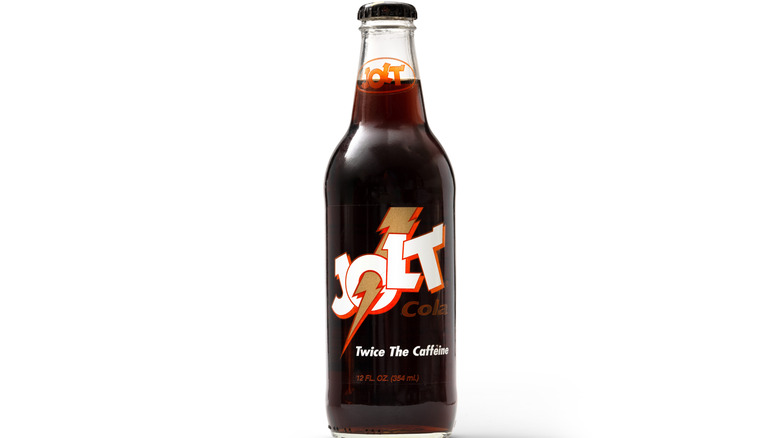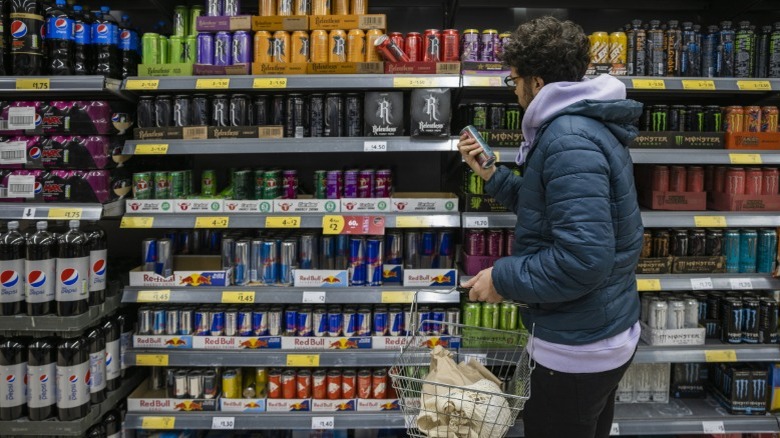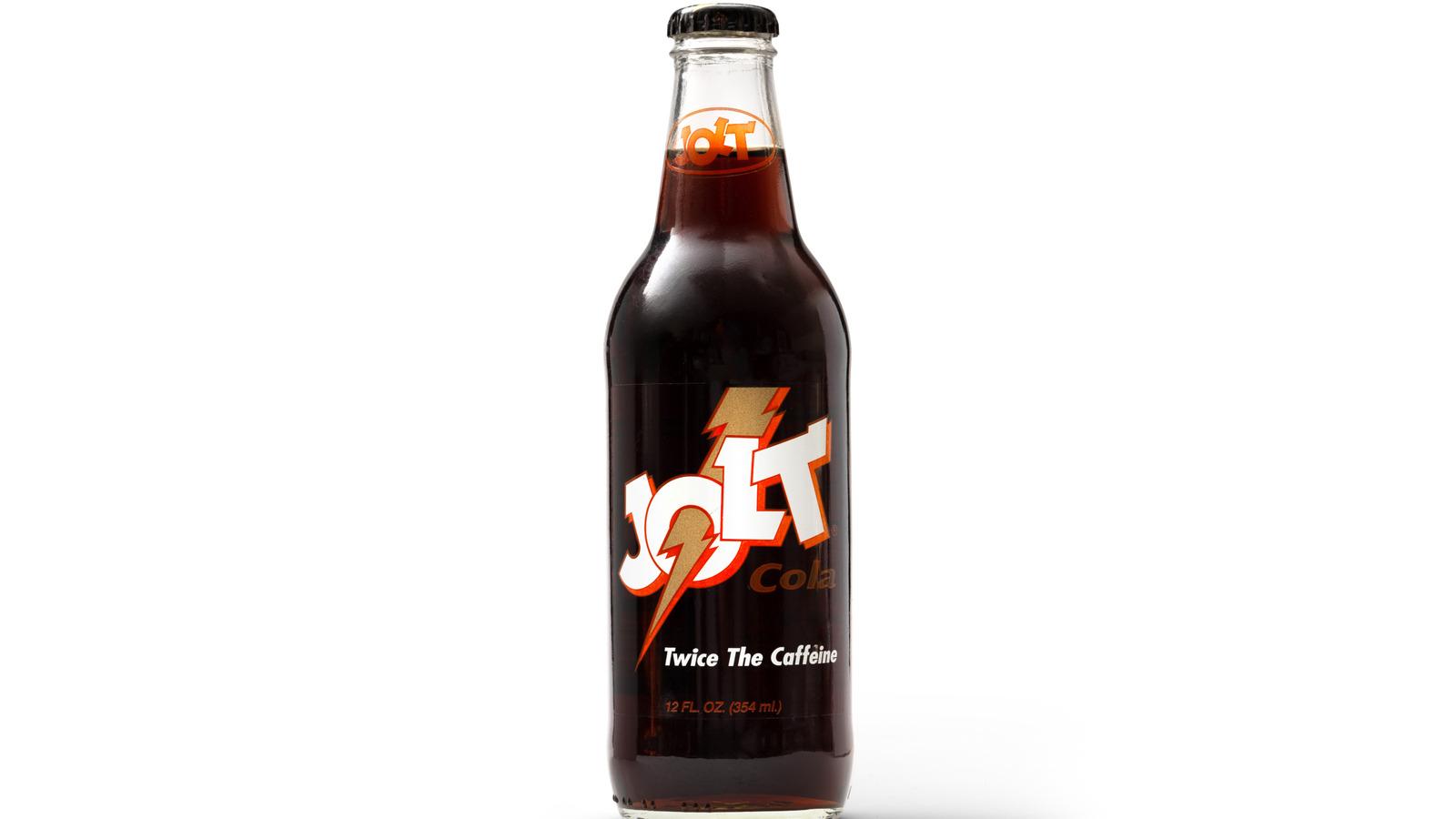
Cember Tech/Shutterstock
We may receive a commission on purchases made from links.
A once-popular drink that '80s kids will recognize, Jolt Cola contained "all the sugar and twice the caffeine" (in the words of its slogan). But while Coke and Pepsi have been mainstays on grocery store shelves, Jolt Cola has not. So what really happened to the brand?
CJ Rapp, a former employee of Canada Dry, conceived of Jolt in 1979 in Rochester, New York. Rapp wanted to create a cola-flavored alternative to brands like Coca-Cola and Pepsi, and it took years to perfect Jolt's formula. The soda officially launched in 1985 and a 12-ounce can boasted 70 milligrams of caffeine, distinguishing it from other offerings.
The original Jolt soda was discontinued. The brand's parent company, Wet Planet Beverages, filed for bankruptcy in 2009 after sales dropped significantly. In the years prior, CJ Rapp made a deal to purchase 90 million resealable cans from producer Rexam (and strangely, did not tell the board of said agreement). Due to the recession and an increasingly competitive market, Jolt was left unable to afford the promised amount. The bankruptcy filing listed debts between $1 and $10 million, and Rexam was the largest entity owed (around $2.1 million). Additionally, Jolt faced a $20 million class-action lawsuit in Canada alleging that it did not disclose potentially harmful side effects related to caffeine consumption. The drink made a brief comeback in 2017, specifically at Dollar General Stores, but by 2019 was no longer sold. Despite past financial troubles, Jolt returned once again during the mid-2020s in a slightly different form.
Jolt's long-awaited revival

Solstock/Getty
Sport nutrition company Redcon1 reimagined the beverage, which will now contain over 200 milligrams of natural caffeine (from green coffee beans) in a 16-ounce can. Redcon1 produces its own line of energy drinks (called Redcon1 Energy), protein powders, and workout supplements, alongside other sport-centric merchandise. The company invested significantly into the development of Jolt, with the whole process taking around 18 months. =
The team that made it happen included a scientist who helped craft the popular Bang energy drink. Redcon1 even tried to source original cans of Jolt Cola from eBay. Available on Amazon, Jolt Cola joins Redcon1 Energy's other flavor offerings, which include Baja Bomb and Icy Blue Lemonde.
Besides having more than double the caffeine, Jolt Cola now also contains B vitamins and L-carnitine, a supplement it links to metabolism support. (We should note that the science on this connection is still murky, and studies have been mixed). Regardless of the massive market for ultra-energy boosted beverages, overconsumption of caffeine has been linked to headaches and anxiety. The risk of adverse effects is what got the drink wrapped up in the class-action suit back in 2009. However, Jolt's 200 milligrams don't go over the recommended 400 milligrams daily the FDA considers to be safe for adults. But, for teens and younger children, excessive caffeine intake can lead to heart palpitations, high blood pressure, and even digestive issues.



